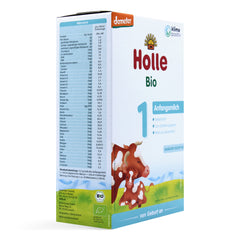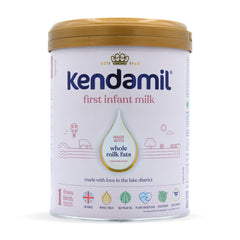How to Get Rid of Pacifier
30 hours of research 5 minute read

One of the most common hurdles parents face is weaning their baby off the pacifier, also known as the binky or dummy. The pacifier may have been a source of comfort and tranquility for your little one, but there comes a time when you need to bid farewell to this soothing companion. In this guide, we'll explore gentle and effective ways to help your baby part ways with the pacifier, ensuring a smooth transition for both parent and child.
What is a Pacifier?
The pacifier, also recognized by names for pacifiers such as the binky or dummy, is a small, nipple-shaped device designed to soothe and comfort infants by providing a non-nutritive sucking outlet. Typically composed of a nipple made from materials such as rubber, silicone, or latex, paired with a handle or guard to prevent the baby from swallowing the entire pacifier, it serves as a straightforward yet efficient tool. Available in various shapes and sizes, pacifiers are primarily designed to offer comfort and soothing sensations, aiding babies in self-soothing during moments of distress or while establishing sleep routines.
Should Your Baby Use a Pacifier?

Deciding whether to introduce a pacifier requires careful consideration of various factors. Here are some key considerations:
Age:
Introducing a pacifier too early may interfere with breastfeeding. The American Academy of Pediatrics suggests delaying the introduction of a pacifier until breastfeeding is firmly established, typically at around three to four weeks of age.
Developmental Stage:
Your baby's developmental stage should be a guiding factor in introducing a pacifier. Pay attention to cues indicating your baby is ready for comfort sucking. This stage often coincides with increased hand-to-mouth coordination and a growing inclination for self-soothing. Offering a pacifier during this developmental window can enhance its effectiveness as a source of comfort for your little one.
Individual Needs:
Each baby is unique, and their response to pacifier use may vary. Pay attention to your baby's cues and adjust your approach accordingly. If you find that your baby won't take pacifier, don't force it. Some babies simply prefer other soothing methods, and that's perfectly normal. Additionally, you may wonder, "How many pacifiers do I need?" It's a good idea to have a few on hand in case one gets lost or dirty, but ultimately, the number depends on your baby's preferences and your own comfort level.
5 Pacifier Safety Recommendations
Ensuring the safe use of pacifiers is of utmost importance. Follow these five safety recommendations to create a secure pacifier experience for your baby:
1. Opt for Single-Piece Pacifiers
Opt for one-piece pacifiers, considered the best pacifier choice, to eliminate the risk of small parts coming loose and posing a choking hazard. One-piece designs reduce the likelihood of breakage and ensure your baby's safety.
2. Practice Daily Pacifier Cleaning
Regularly cleaning pacifiers with mild soap and water is crucial for maintaining your baby's oral health. Bacteria can accumulate on pacifiers, so knowing how to clean them properly is essential for a hygienic environment and baby’s safety.
3. Don’t Hang the Pacifier from Baby's Neck
Avoid using pacifier clips that attach to a baby's clothing and hang the pacifier around their neck. This practice poses a strangulation risk and is not recommended for ensuring the safety of your baby.
4. Don’t Use a Bottle Nipple as a Pacifier
Bottle nipples are not designed for prolonged sucking and can lead to overfeeding and gas discomfort for your baby. Opt for purpose-designed pacifiers to ensure the appropriate size, shape, and material for healthy oral development.
5. Ensure the Right Size Pacifier
As your baby grows, choose pacifiers that are appropriate for their age and developmental stage. Using the correct size reduces the risk of choking and ensures your baby's comfort during use.
Pros of Pacifier Use

1. Soothing Comfort
Pacifiers provide instant comfort and relaxation for babies, offering a quick solution for soothing during moments of distress. The act of sucking triggers the release of endorphins, creating a calming effect.
2. Sleep Aid
Pacifiers can aid in establishing a sleep routine, helping babies fall asleep faster and potentially reducing the risk of sudden infant death syndrome (SIDS). The gentle sucking motion can contribute to a sense of security during bedtime.
3. Reduced Thumb-Sucking
Parents often prefer pacifiers over thumb-sucking, as they have more control over when and how the pacifier is used. Unlike thumb-sucking, pacifier use can be monitored and controlled by parents.
4. Weaning from Breast or Bottle
Pacifiers can serve as transitional objects, assisting babies in gradually weaning from breastfeeding or bottle-feeding. They offer an alternative outlet for sucking, reducing the reliance on the breast or bottle.
Cons of Pacifier Use
1. Dental Issues
Prolonged pacifier use, especially after the age of two, can lead to dental problems, including misaligned teeth, an improper bite, and potential concerns related to binky teeth. The pressure applied during sucking can affect the alignment of growing teeth.
2. Speech Delays
Excessive pacifier use may contribute to speech delays, as it restricts the natural development of oral muscles necessary for speech. Children who use pacifiers extensively may not exercise their oral muscles as much as their non-pacifier-using counterparts.
3. Ear Infections
The use of pacifiers has been linked to an increased risk of ear infections. The constant sucking can lead to changes in swallowing patterns, potentially contributing to the development of ear infections.
4. Dependency
Overreliance on the pacifier can create a dependency, making it challenging for children to self-soothe without it. Breaking this dependency can be a difficult process if pacifier use is not gradually reduced over time. Additionally, parents might wonder, "Should I remove pacifier when baby is sleeping?" While some parents choose to allow their babies to use pacifiers during sleep for soothing purposes, others prefer to remove them once the baby is asleep to minimize dependency and potential safety risks. Ultimately, the decision depends on parental preference and guidance from healthcare professionals.
When to Stop with Pacifier Use?
Deciding when to stop pacifier use is a personal choice and may vary for each child. The American Academy of Pediatrics suggests weaning from the pacifier around the age of six months to one year to avoid potential dental and speech issues. However, some children naturally outgrow the need for a pacifier earlier, while others may require more time.
Tips on How to Stop with the Pacifier

Before diving into the strategies, it's crucial to understand why breaking the pacifier habit is essential for your baby's development. While the pacifier provides comfort and helps babies self-soothe, prolonged use can lead to dental issues, speech delays, and an increased risk of ear infections. Furthermore, weaning your baby off the pacifier promotes better oral development, ensuring a healthy smile in the long run.
Transitioning away from pacifier use can be a delicate process, but with the right strategies, it can be smooth and successful. Here are some tips on how to stop with the pacifier:
1. Gradual Reduction
Cold turkey might work for some, but a gradual reduction approach is often more successful and less stressful for both parent and baby. Begin by limiting pacifier use to specific times, such as naptime or bedtime. As your baby becomes accustomed to this new routine, gradually reduce the pacifier's presence until it is only used during sleep. This gentle pacifier weaning system progression helps your baby adjust to life without the pacifier, minimizing resistance and distress.
2. Introduce Comforting Alternatives
Replacing the pacifier with comforting alternatives can make the transition smoother. Consider introducing a security blanket, a soft plush toy, or even a gentle lullaby to help your baby find comfort without the pacifier. These pacifier alternatives not only help fill the void left by the pacifier but also encourage healthy self-soothing habits.
3. Create a Pacifier-Free Zone
Designate certain areas in your home as pacifier-free zones. Encourage your baby to leave the pacifier in the crib when entering communal spaces. By creating distinct spaces for pacifier use, you help your baby associate the binky with specific times and places, making it easier to gradually phase it out.
4. Involve Your Child in the Process
Explain to your child that they are growing and no longer need the pacifier. Involve them in the decision-making process and allow them to choose a new comfort item. This sense of empowerment fosters a feeling of control, making the transition smoother.
5. Implement a Reward System
Providing positive reinforcement significantly contributes to promoting desired behavior. Create a reward system to celebrate your baby's progress in giving up the pacifier. Use a sticker chart or a small rewards jar, allowing your child to place a sticker or token for each pacifier-free day. Once a certain number of stickers are accumulated, offer a special reward or treat. This not only motivates your child but also turns the weaning process into a positive and exciting experience.
6. Be Consistent
Consistency is crucial when it comes to breaking the pacifier habit. Stick to the rules you've established and avoid giving in to requests for the pacifier outside of designated times. Consistency helps your baby understand the new routine and adapt to life without the binky more smoothly.
7. Comfort Your Child
Expect some resistance and moments of distress as your baby adjusts to the pacifier-free routine. Be prepared to provide extra comfort and attention during these times. Offer hugs, cuddles, and soothing words to reassure your child that they are safe and loved. This emotional support is essential in helping your baby cope with the changes.
8. Stay Patient and Understanding
Every child is unique, and the pacifier weaning process may take longer for some than others. Stay patient and understanding, recognizing that your baby is undergoing a significant developmental milestone. Avoid scolding or expressing frustration, as this may create negative associations with the weaning process. Instead, focus on the positive progress your child is making and offer continuous encouragement.
Byebye Binky
Saying goodbye to the baby pacifier is a bittersweet milestone in your child's development. While it may be challenging at times, implementing these gentle strategies can make the transition smoother and more positive for you and your little one. Remember, every child is different, and the key is to be patient, consistent, and understanding throughout the process. By creating a supportive environment and gradually reducing the pacifier's presence, you'll pave the way for a successful transition, ensuring your child's oral health and overall well-being.
Most Popular Baby Formulas for Transitioning Away from Pacifiers
References:











Guy -
I always worry about how breaking routines like pacifier use will affect my baby’s sleep and emotional comfort. Does anyone else feel the same way?
Ismael -
My baby got so attached to her pacifier, and my wife was afraid that she’d get dental issues. We tried substituting it with other toys that will bring her comfort, like a plushie. It worked! No more binky!